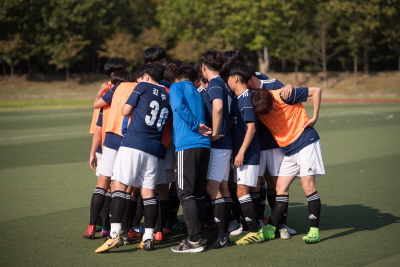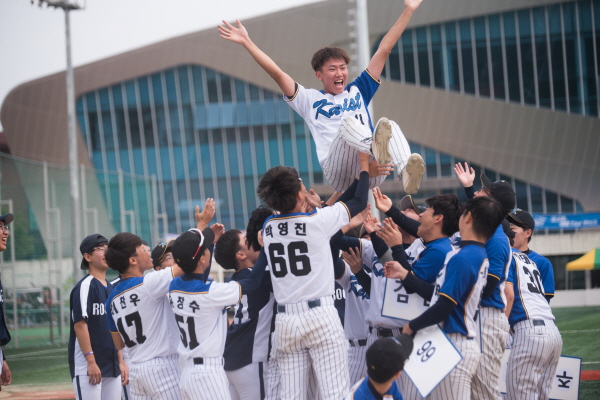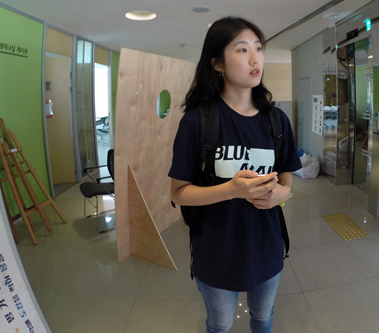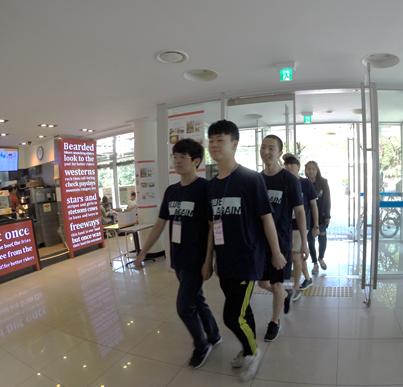event

The 16th Postech-KAIST Science War wrapped up its two-day rivals’ duel at the KAIST campus in Daejeon on September 23. The event was established in 2002 to build a close tie between the two renowned universities for science and technology, and to provide students with an opportunity to demonstrate their talents and abilities.

On September 21, a convoy of red Postech buses carrying more than 650 athletes, students, and supporters arrived at the KAIST campus in Daejeon. The two teams competed in eight events including both online and sports event.

The night before the actual games started, cheerleading teams from both Postech Cheero and KAIST ELKA kicked off the event.
1st Day (September 22)










(Jiwon Hwang, Public Relations of the 16th Science War Committee)

(The 16th Science War Committee)
Cheers to the students committees, participants, and supporters who put every ounce of their effort into successfully running the 16th Postech-KAIST Science War.

|
Day |
Category |
Winner |
|
Day 1 |
Hacking |
Postech |
|
Soccer |
KAIST |
|
|
Artificial Intelligence |
Postech |
|
|
E-Sports (LoL) |
Postech |
|
|
Day 2 |
Baseball |
KAIST |
|
Science Quizzes |
Postech |
|
|
Badminton (spin-off) |
KAIST |
|
|
Basketball |
KAIST |
(The final tally for KAIST in the Science Wars was eight wins and six losses)
-
research Simultaneous Analysis of 21 Chemical Reactions... AI to Transform New Drug Development
< Photo 1. (From left) Professor Hyunwoo Kim and students Donghun Kim and Gyeongseon Choi in the Integrated M.S./Ph.D. program of the Department of Chemistry > Thalidomide, a drug once used to alleviate morning sickness in pregnant women, exhibits distinct properties due to its optical isomers* in the body: one isomer has a sedative effect, while the other causes severe side effects like birth defects. As this example illustrates, precise organic synthesis techniques, which selectivel
2025-06-16 -
research KAIST Professor Jee-Hwan Ryu Receives Global IEEE Robotics Journal Best Paper Award
- Professor Jee-Hwan Ryu of Civil and Environmental Engineering receives the Best Paper Award from the Institute of Electrical and Electronics Engineers (IEEE) Robotics Journal, officially presented at ICRA, a world-renowned robotics conference. - This is the highest level of international recognition, awarded to only the top 5 papers out of approximately 1,500 published in 2024. - Securing a new working channel technology for soft growing robots expands the practicality and application possib
2025-06-09 -
research KAIST Introduces ‘Virtual Teaching Assistant’ That can Answer Even in the Middle of the Night – Successful First Deployment in Classroom
- Research teams led by Prof. Yoonjae Choi (Kim Jaechul Graduate School of AI) and Prof. Hwajeong Hong (Department of Industrial Design) at KAIST developed a Virtual Teaching Assistant (VTA) to support learning and class operations for a course with 477 students. - The VTA responds 24/7 to students’ questions related to theory and practice by referencing lecture slides, coding assignments, and lecture videos. - The system’s source code has been released to support future developmen
2025-06-05 -
research RAIBO Runs over Walls with Feline Agility... Ready for Effortless Search over Mountaineous and Rough Terrains
< Photo 1. Research Team Photo (Professor Jemin Hwangbo, second from right in the front row) > KAIST's quadrupedal robot, RAIBO, can now move at high speed across discontinuous and complex terrains such as stairs, gaps, walls, and debris. It has demonstrated its ability to run on vertical walls, leap over 1.3-meter-wide gaps, sprint at approximately 14.4 km/h over stepping stones, and move quickly and nimbly on terrain combining 30° slopes, stairs, and stepping stones. RAIBO is ex
2025-06-04 -
research KAIST Develops Virtual Staining Technology for 3D Histopathology
Moving beyond traditional methods of observing thinly sliced and stained cancer tissues, a collaborative international research team led by KAIST has successfully developed a groundbreaking technology. This innovation uses advanced optical techniques combined with an artificial intelligence-based deep learning algorithm to create realistic, virtually stained 3D images of cancer tissue without the need for serial sectioning nor staining. This breakthrough is anticipated to pave the way for next-g
2025-05-26